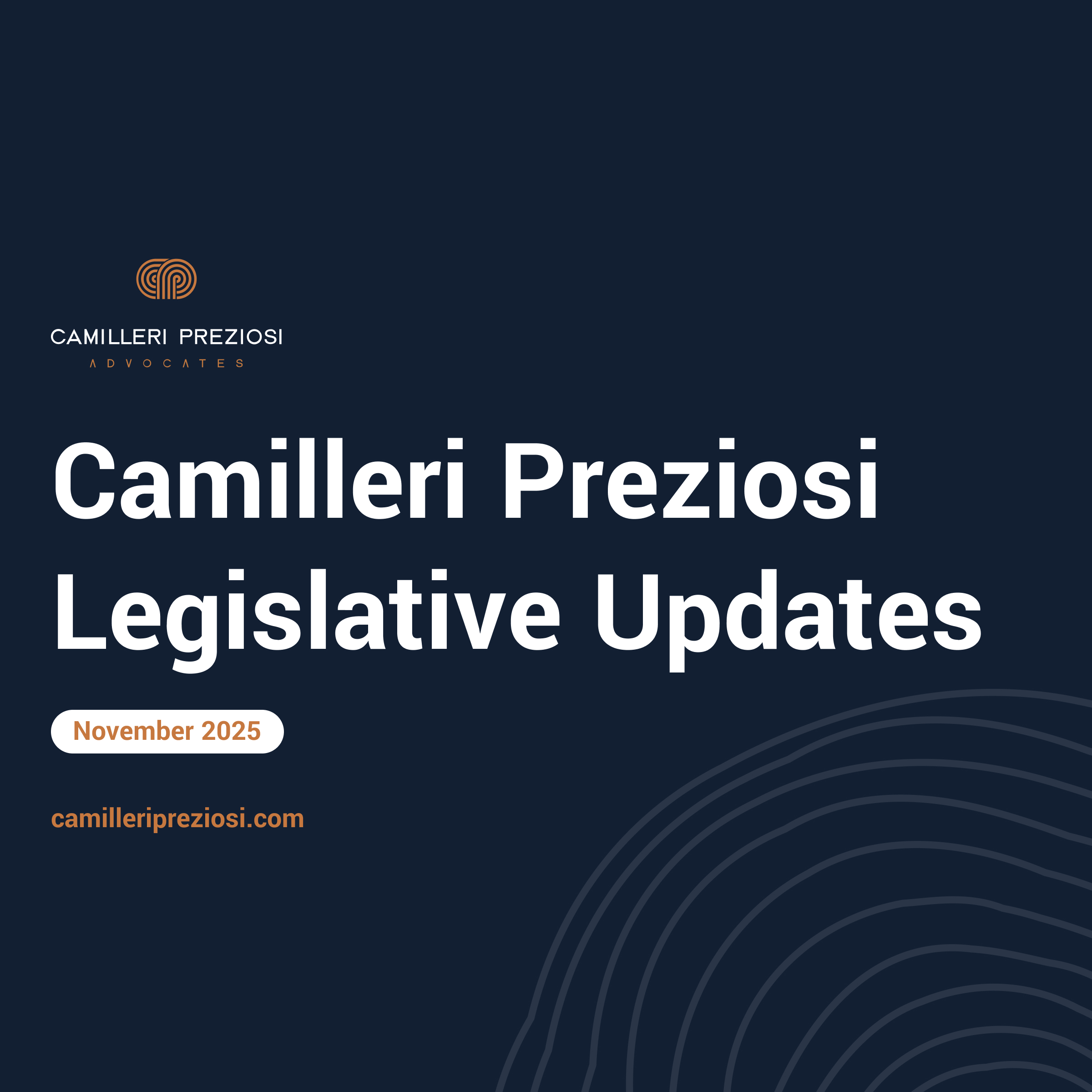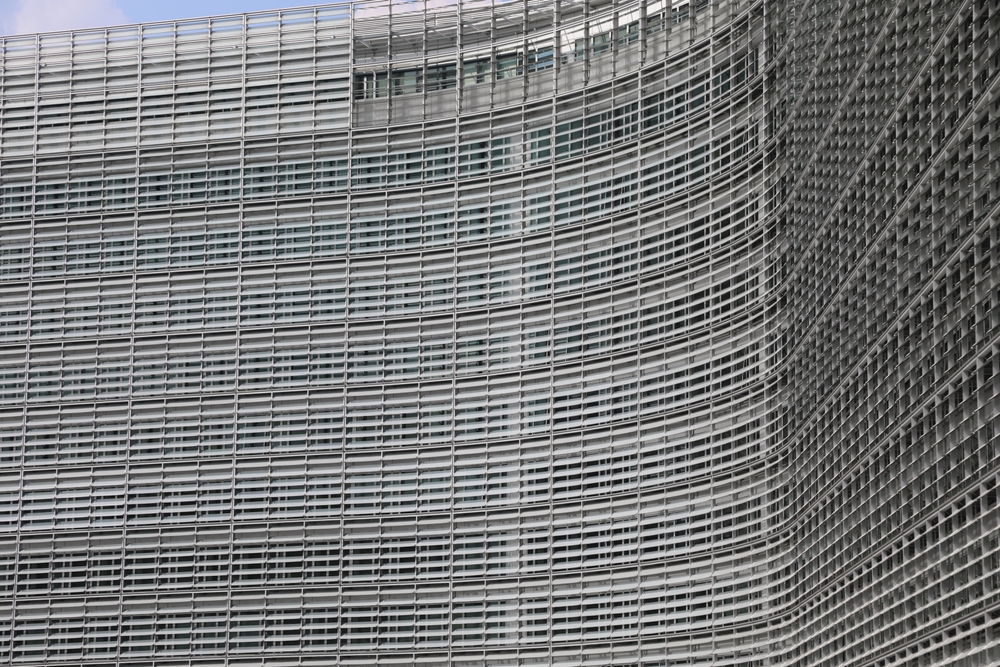Read the latest
News, Events & Articles
Insights

Camilleri Preziosi Sponsors the Legal Practice in the Age of AI Conference
Artificial intelligence is no longer a future concept for the legal profession — it is a present reality, reshaping how legal services are delivered, regulated and experienced. Camilleri Preziosi is proud to support Legal Practice in the Age of AI, a conference organised by the Chamber of Advocates and taking place on 17 December 2025 […]
Read more
The CP Legislative Updates Series – November 2025
There were several important legislative changes which were published over the course of November 2025. Below is an overview of the key updates across different areas. Four pivotal Acts were published in November. The Various Laws relating to Differentiation between Genders (Amendment) Act, 2025 made substantive progress in aligning Maltese laws with gender-neutral standards. The […]
Read more
Camilleri Preziosi Contributes to ICLG on Designs – 2026 Edition
Steve Decesare and Alexia Valenzia have contributed to the Malta Chapter for the 6th edition of Global Legal Group’s International Comparative Legal Guide (ICLG) on Designs. In summary, the guide covers the following topics: Relevant authorities and legislation The Comptroller of Industrial Property as established under Article 3 of the Patents and Designs Act is the relevant authority […]
Read more
Camilleri Preziosi ranked in the Chambers and Partners Fintech Legal Guide 2026
We are proud to announce that our firm has been recognised in the latest edition of Chambers and Partners Fintech Guide, for our expertise in Fintech, a testament to our commitment to excellence in this rapidly evolving sector. This prestigious ranking reflects not only the technical proficiency and commercial acumen of our team, but also […]
Read more
The CP Legislative Updates Series – October 2025
There were several important legislative changes which were published over the course of October 2025. Below is an overview of the key updates across different areas. One Act was published in October – the Authority for Transport in Malta (Amendment) Act, 2025. This piece of legislation amends the Authority for Transport in Malta Act, Chapter […]
Read more
The Camilleri Preziosi Corporate Finance Conference 2025
Join us on the 13th November from 13.30 for a half-day Conference. Camilleri Preziosi’s upcoming Corporate Finance Conference will bring together banks, business leaders and finance experts to assess the level of sophistication of the local corporate finance landscape. The event will feature keynotes, economic presentations and discussions on whether it is time to push for […]
Read more
Malta Budget 2026 – Employment Law Insights
The Malta Budget 2026, presented on 27 October 2025, reaffirms the Government’s focus on social equity, workforce retention, and skills development, signalling investment in both people and productivity. Here are the key takeaways for employers from an employment law perspective: Cost-of-Living Adjustment (COLA) The COLA for 2026 has been set at €4.66 per week for […]
Read more
Malta Budget 2026
The Budget for the 2026 legislature was presented to the Maltese Parliament on the 27th of October 2025, with the Minister of Finance highlighting Malta’s continued strong economic performance and the highest economic growth in the European Union. Further to high inflation observed over 2024, previous measures to counteract the effects of the rising cost […]
Read more
Celebrating Women in Tax Leadership
Congratulations to Kirsten Debono Huskinson and Gabriella Chircop for their outstanding recognition in the ITR World Tax rankings. Louis de Gabriele, Managing Partner commented:“Kirsten and Gabriella exemplify the depth and innovation that define our firm. Their recognition in the ITR World Tax rankings is not only a personal achievement but also a milestone for women […]
Read more
Commission Launches Dual Initiative to Boost EU Retail Investment and Financial Literacy
On 30 September 2025, the European Commission announced two complementary initiatives designed to advance the Savings and Investments Union (“SIU”) and strengthen retail investor engagement across Member States. The comprehensive package comprises a Financial Literacy Strategy and a Recommendation establishing a blueprint for Savings and Investment Accounts (the “SIA Recommendation“). The Financial Literacy Strategy The […]
Read more